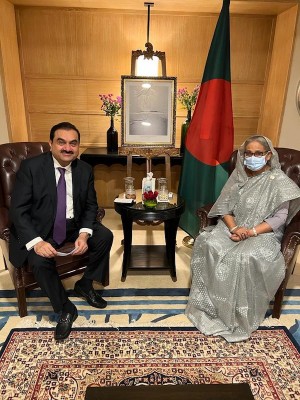
Connecting rural India with high-speed mobile broadband to become reality soon?
However, with barely 13% rural population on the internet (http://trai.gov.in/sites/default/files/quarterly_press_release_Eng_07042017.pdf), India has one of the world’s largest unconnected rural population. In the 2017 Annual Budget,Arun Jaitley, Finance Minister of India, propagated the extension of high-speed internet connectivity to 1,50,000 villages across the nation.
Manoj Sinha, the MoS Communication, has been working tirelessly to expand connectivity across rural India and bridge the Digital divide.
The industry has been an equal partner in supporting the Prime Minister’s vision of a fully connected India, said Rajan S. Mathews, DG, COAI sharing with the media this recent development at the WP (Working Party)-5D Meeting at ITU.
But with a huge gap in connectivity and internet penetration, it has turned out to be a difficult task for the policy makers.
With the Indian policy makers aiming to build a telecom based digital infrastructure to cover every corner of the country by 2020, the Dept. of Telecommunication (DoT) is already working on ensuring that the next generation of standards is already designed to suit that need. At the recently concluded meeting of the ITU-R terrestrial radio systems (WP5D) in Canada, the Indian delegation consisting of members from the Telecom Engineering Center (TEC), the research wing of DoT, COAI, TSDSI, industry and academia championed the mandatory evaluation of a configuration called Low Mobility Large Cell (LMLC). This configuration is specifically designed with rural India in mind, and is likely become a game changer.
Rajan Mathews, DG, COAI, said “Considering the view that this approval has come at a time when we are working hard to improve the quality of service for our customers, and in supporting the Govt. of India on the policy initiatives they are taking for rural connectivity”. He added that “The COAI with its members will be working with the Indian administration and other stakeholders to pursue this further in 3GPP, a telecom standard setting body, and ensure that the support for LMLC in the 5G specification is created. Support from a global standards body brings in scales of manufacturing, which is the key to keeping cost low. In a price-sensitive market like India, this sort of consensus building and global cooperation is a definitive need.”
The Cellular Operators Association of India (COAI) had initiated the task of addressing rural Indian requirement using IMT-2020 systems in August 2016, with the active support of its members. It was becoming clear during this time that by 2020, the National Optical Fiber Network (NOFN), recently rechristened as BharatNet, would have reached all the 250,000 gram panchayats in the country. With BharatNet offering the backbone connectivity, it was essential to design a last mile cellular system that would deliver services to users about 3.5
Support Our Journalism
We cannot do without you.. your contribution supports unbiased journalism
IBNS is not driven by any ism- not wokeism, not racism, not skewed secularism, not hyper right-wing or left liberal ideals, nor by any hardline religious beliefs or hyper nationalism. We want to serve you good old objective news, as they are. We do not judge or preach. We let people decide for themselves. We only try to present factual and well-sourced news.







